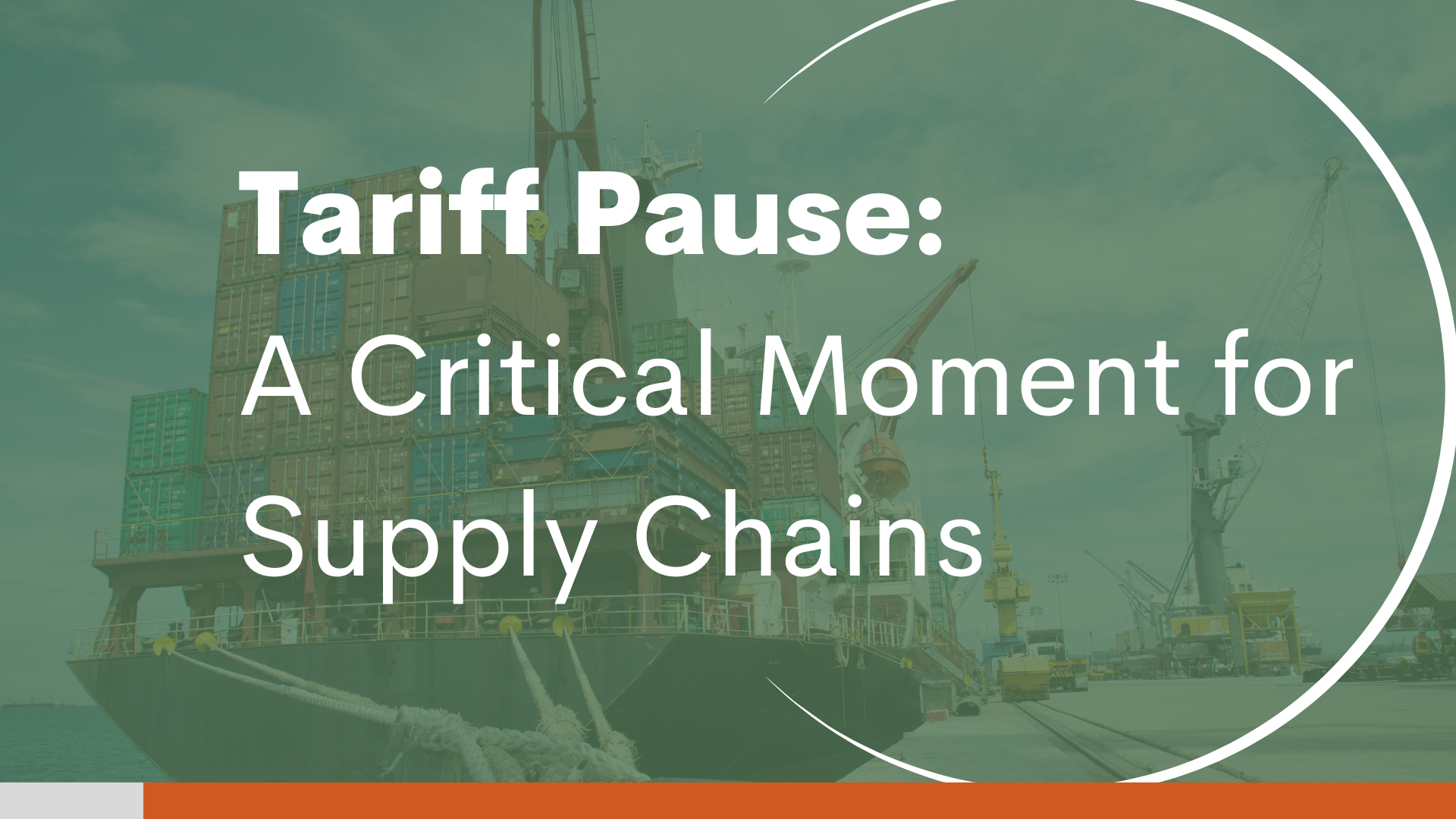President Trump’s surprise announcement of a 90-day reciprocal tariff pause—excluding China—sparked the biggest market rally since 2008. But for global shippers, this brief relief introduces new challenges. Tariffs aren’t gone—they’re just paused—and the clock is ticking until July 9, 2025.
During this period, most countries face a baseline 10% tariff, down from higher rates. However, Chinese goods now face a staggering 145% tariff, combining past and new penalties. For shippers, this means rethinking supply chains, managing freight costs, and preparing for what comes after the pause ends.

What the Tariff Pause Actually Covers
The pause reduces tariffs for 57 trading partners—including the EU, Japan, and South Korea—to a flat 10%. Industry-specific tariffs on steel, aluminum, autos, and some critical materials remain. Mexico and Canada are partly exempt under USMCA, but non-covered goods are still subject to 25% tariffs.
Meanwhile, China faces much harsher terms. Its 145% tariff rate includes a 125% reciprocal tariff plus an existing 20% fentanyl-related penalty. For companies that rely heavily on Chinese manufacturing, this essentially blocks many imports, creating a costly urgency to shift sourcing.

What Shippers Need to Do Right Now
1. Review Supply Chain Vulnerabilities
Identify where your biggest risks lie. Map your full supplier network—including second-tier vendors—and assess exposure to regions with high or changing tariffs. Multinational firms must pay special attention to internal transfer pricing and customs declarations.
2. Explore Backup Options
Now’s the time to consider reshoring, “China +1” models, or sourcing from lower-risk countries. Some firms have already diversified production to Vietnam, India, and Bangladesh. Domestic sourcing may also be a viable short-term fallback.
3. Move Inventory Fast
Shippers are rushing to move goods before tariffs potentially return. Ocean freight is busy, and air cargo demand is rising. If you haven’t started accelerating critical shipments, don’t wait—transport capacity could tighten fast, driving up costs.
4. Track and Document Costs
Review supplier contracts to determine if tariff costs are being passed to you—and review your own customer agreements to see if you can do the same. Maintain detailed records of cost increases by product and origin to support price negotiations or future duty drawback claims.

Freight Cost Shifts Across Modes
Ocean Freight: Trans-Pacific spot rates have dropped significantly—down 40% year-over-year. But this may be temporary. With continued uncertainty and the threat of labor strikes, contract rates could spike again in 2025.
Air Cargo: E-commerce now drives about 20% of airfreight—and rising tariffs are accelerating this trend. Expect rate hikes and congestion around key deadlines. Past tariff waves slowed air cargo growth, and a similar pattern could repeat post-pause.
Trucking & Cross-Border: Equipment costs are rising: trucks, trailers, and parts are all subject to tariff-related price hikes. Cross-border trade with Canada and Mexico remains turbulent, especially for aluminum and energy goods.

Who Actually Pays?
Many assume the importer shoulders the tariff burden—but costs often ripple throughout the supply chain. Some suppliers pass costs to buyers, and consumers ultimately feel the pinch through price increases. Companies are adopting strategies like:
- Separating tariff charges from base pricing
- Reengineering products to use tariff-free components
- Adjusting prices selectively across product lines
- Highlighting U.S.-made components to support value-based pricing
Understanding “total landed cost” is key—especially when comparing potential new suppliers.

What Happens After July 9?
The end of the pause could trigger renewed tariff hikes. Prepare for multiple scenarios:
- Base case: Flat 10% tariffs continue
- Escalation: Tariffs rise sharply—especially on Chinese, Mexican, or Canadian goods
- Selective targeting: High rates return for specific industries or countries
Smart companies are building resilience now. That means flexible sourcing, strategic inventory buffers, and updated financial models. Programs like Foreign Trade Zones and bonded warehouses may also offer cost-saving relief.

Final Thought – Don’t Navigate This Alone
The 90-day tariff pause offers a brief opportunity to act—but it also brings significant complexity. From shifting transportation rates to changing supplier dynamics, it’s a lot to manage while staying focused on your core business.
PLS Logistics is here to help you make sense of it all. Whether you need help identifying cost-saving opportunities, modeling post-pause scenarios, or accelerating time-sensitive shipments, our experts are ready to step in. We can provide clear answers, tailored strategies, and real-time freight support to protect your margins and keep your operations running smoothly.
Reach out to PLS today to start building a plan that positions you for success—before July 9 and beyond.

